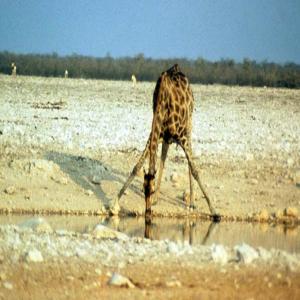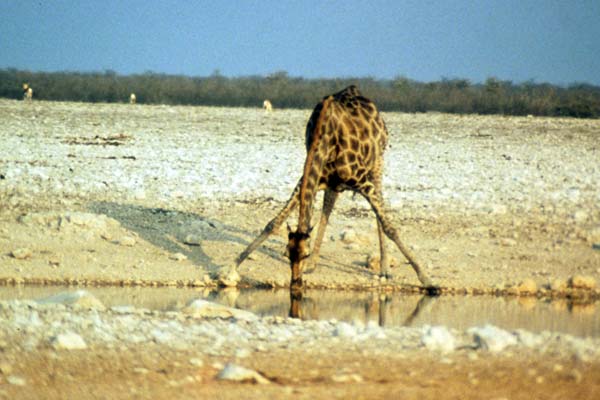Episodes

Monday Jun 20, 2011
The WildLife: Bear Bile Trade in Asia, Kaitlyn Foley
Monday Jun 20, 2011
Monday Jun 20, 2011
Kaitlyn Foley, senior programme officer at TRAFFIC Southeast Asia, talks about the bear bile trade in Asia. She tells “The WildLife” host Laurel Neme how recent research by TRAFFIC shows that the illegal bear bile trade continues unabated across Asia on a large scale.
The poaching and illegal trade of bears is driven largely by the demand for their bile, which is used in traditional medicine and folk remedies. Research by TRAFFIC, published in the report Pills, Powders, Vials & Flakes: The bear bile trade in Asia, found bear bile products on sale in traditional medicine outlets in all but one (Macao) of the 13 countries/territories surveyed, suggesting a complex and robust trade in bear products. Of particular note were mainland China, Hong Kong, Malaysia, Myanmar and Viet Nam, where bear bile products were most frequently observed. While bile from bear farms in China is legal if sold domestically, TRAFFIC found this Chinese bear bile being illegal sold across the border. It also noted that “Mom & Pop” bear farms were popping up in Laos and Myanmar, making these countries new potential hubs for this trade.
Kaitlyn-Elizabeth Foley is a senior programme officer at TRAFFIC Southeast Asia. She holds a BA in Anthropology from the University of Rhode Island and a Master of Science in Primate Conservation from Oxford Brookes University. Her main research interests include wildlife trade, conservation, and animal behavior and welfare. For the past nine years, Kaitlyn has lived and worked abroad in Italy, the United Kingdom and Malaysia. Most recently her work and research interest has been focused on the conservation and mitigation of trade in bears and the pet trade of mammals in Asia. This episode of “The WildLife” aired on The Radiator, WOMM-LP, 105.9 FM in Burlington, Vermont on June 20, 2011.

Monday May 02, 2011
The WildLife: Wildlife Rescue in Cambodia, Nick Marx
Monday May 02, 2011
Monday May 02, 2011
Nick Marx of Wildlife Alliance talks about rescuing wildlife from illegal trade in Cambodia. He tells “The WildLife” host Laurel Neme that since 2001, the Cambodian government has cracked down on the illegal wildlife trade with the Wildlife Rapid Rescue Team (WRRT), an inter-agency wildlife crime investigation and counter-trafficking unit of the Forestry Administration and Royal Gendarmerie of Cambodia operating with technical and financial support from Wildlife Alliance. To date, the Wildlife Rapid Rescue Team has rescued more than 40,000 live wild animals, raided hundreds of restaurants, markets and shops illegally selling wildlife, set up check points on roads and dramatically reduced wildlife crime in Cambodia. Whenever possible, live animals rescued by the team are released back into the wild. But when the rescued animals need medical attention or are too young for release into the wild, they are taken back to the Phnom Tamao Wildlife Rescue Center for care. The Phnom Tamao Wildlife Rescue Center is situated less than an hour away from Cambodia’s capital of Phnom Penh and is currently home to over 1,200 animals rescued from the illegal wildlife trade. Nick Marx is Wildlife Rescue Director at the Phnom Tamao Wildlife Rescue Center. He works for Wildlife Alliance, a non-profit organization based in Cambodia and Washington, D.C. that works directly with communities and governments to improve forest management and institute good governance to comprehensively address the devastation of ecosystems and combat the illegal wildlife trade. Nick holds a master’s degree in Conservation Biology and has more than forty years of experience in animal care, especially with large wildlife. His animal experience includes large predators (such as tigers, lions, cheetahs, leopards), primates (including orangutans, gibbons), elephants, and other mammals. He has worked in park management, wildlife conservation, and animal care in the United Kingdom, India, South Africa, and Southeast Asia. He advises the Wildlife Rapid Rescue Team on dealing with human-animal conflicts and providing care for animals rescued from the illegal wildlife trade. He has lectured and published broadly on wildlife conservation and animal husbandry, and appeared on global television broadcasts on BBC, ABC Nightline, CNN Planet in Peril, and other global media outlets. This episode of “The WildLife” aired on The Radiator, WOMM-LP, 105.9 FM in Burlington, Vermont on May 2, 2011.

Monday Mar 21, 2011
The WildLife: Protecting Wildlife in Cambodia, Suwanna Gauntlett
Monday Mar 21, 2011
Monday Mar 21, 2011
Suwanna Gauntlett, co-founder and executive director of Wildlife Alliance, talks about protecting wildlife in Cambodia. Cambodia has long been one of Asia’s five main source countries for wildlife exported for traditional Asian medicine, exotic pets, and meats. Suwanna tells “The WildLife” host Laurel Neme that when she first arrived in this southeast Asian country in the late 1990s, “you could hardly see any signs of wildlife because of the destruction.” Wildlife was sold everywhere. But that’s changing. Illegal wildlife trade has declined by about 70% in the last 10 years due to a multi-pronged approach working directly with communities and governments both to combat the illegal wildlife trade and to improve forest management. Suwanna and Wildlife Alliance often focus on fighting land development/forest conversions and instead providing alternative and more diversified and sustainable means of making a living. Already, as a result of this work, the government has avoided 28 economic land concessions and saved over 2 million acres of forestland. One of those that Suwanna talks about in this interview are her efforts in the southern Cardamom mountain range, one of Asia’s last seven elephant corridors and Cambodia’s largest remaining intact forest, where her program has reduced elephant poaching there by 95 percent, tiger poaching by 50 percent and forest fires by 80 percent. However, those successes are now under threat due to the recent approval of a land concession for a proposed titanium mine. This episode of “The WildLife” aired on The Radiator, WOMM-LP, 105.9 FM in Burlington, Vermont on March 21, 2011.

Monday Sep 13, 2010
The WildLife: Lorises, Anna Nekaris
Monday Sep 13, 2010
Monday Sep 13, 2010
Anna Nekaris, an expert on nocturnal primates, discusses Asia’s slow and slender lorises. She reveals to “The WildLife” host Laurel Neme what makes these creatures so special and why they’re sought after both as pets and as a key ingredient in traditional medicine. Did you know that the lovable, furry Ewoks in Star Wars films were modeled after slow lorises? But unlike Ewoks, lorises can’t jump or leap, which means they can only move through the forest canopy by using branches that touch.That makes an intact forest vital to their survival. Lorises are also one of the only venomous primates. They have a form of biological venom that’s produced by a gland in their elbows, which they mix with saliva to create a powerful toxin. These unique characteristics are what make them a sought after ingredient in traditional medicine across Asia. In fact, Anna and her research team recently completed the first major study of the use of lorises in traditional medicine in Asia and found a multitude of uses -- as a tonic for women after childbirth, for stomach problems, for healing wounds and broken bones, and in the treatment of sexually transmitted diseases. Lorises are seen as “an animal with 100 uses,” akin to aspirin in Western medicine. Anna Nekaris is a Reader and Course Tutor in Primate Conservation at Oxford Brookes University in the United Kingdom. She is also a member of the IUCN/SSC Primates Specialist Group, the Conservation Working Party of the Primate Society of Great Britain, and on the editorial board of Endangered Species Research and Folia Primatologica. Anna’s main research interests fall under the areas conservation, ecology, and speciation, with her fieldwork taking her to Trinidad, Senegal, Utah, India, Sri Lanka, Singapore, Indonesia, Uganda and Kenya. Although she has conducted fieldwork on bats, small carnivores (including civets and cats), mouse deer, and giant squirrels, her primary research focus is on primates. She has conducted many long-term studies of Indian and Sri Lankan slender lorises. Her current research project, on the diversity and conservation of Asian slow lorises, is being undertaken by Anna and postgraduate students in Java, Sumatra, Thailand, Cambodia, Laos, Singapore and Malaysia, where at least five species of slow loris are found. The team is using morphological, behavioral and vocal analyses to uncover diversity within this group. She has written several articles on the loris trade, including in Endangered Species Research and the American Journal of Primatology, contributed an article on the Javan slow loris to the IUCN/SSC Primate Specialist Groups Top 25 Most Endangered Primates, written a book that includes myths and legends on slender lorises, and contributes to the Loris Potto Conservation Database. This episode of “The WildLife” aired on The Radiator, WOMM-LP, 105.9 FM in Burlington, Vermont on September 13, 2010.

